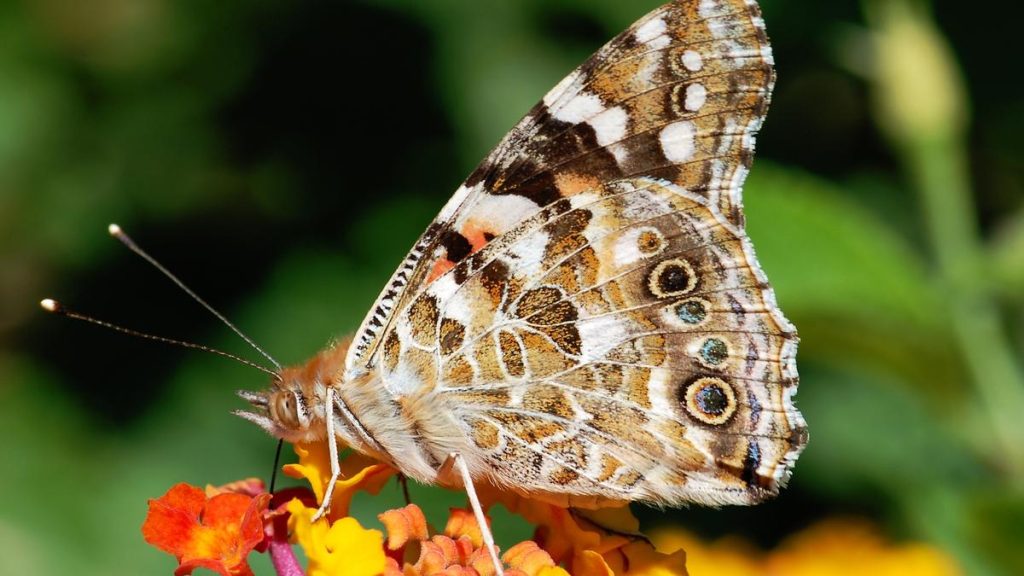Some plants, like snapdragons, can produce a wide range of colourful flowers. The difference between two flowers of different colours can be elicited by comparing their genomes and spotting the differences there, according to Daria Shipilina, a researcher at the Institute of Science and Technology Austria.
As an evolutionary biologist, Shipilina is fascinated by how genes in an organism’s genome contribute to its observable traits, or phenotypes. A phenotype is a physical, biological, or behavioural characteristic shaped by genetics as well as environmental factors. Examples include skin and hair colour in humans, vocal behaviour among birds, and the migratory patterns of some animals.
“Migration is a very complex phenotype,” according to Shipilina. “With colors, it’s quite easy — we see it with our eyes.” But migration is a complex adaptation that involves traits such as migratory timing, orientation, distance covered, and wing shape and size.
Insect in the blindspot
For many years, scientists had had difficulties studying migration in insects because of their size and experts’ inability to track their movement thanks to technological limitations. But a boom in genomics and the development of tracking technologies in miniature has allowed researchers like Shipilina to delve into insect migration with astounding precision.
Taking advantage of the new tools at her disposal, Shipilina has been studying if there are both short-distance and long-distance migrants among butterflies as there are among birds, by phenotyping them.
“For birds, we know a lot — we understand their migration routes and how genes control their migratory behavior in some species,” Shipilina said. “We know practically nothing about insects and specifically genomics of insect migration comparatively.”
In a study published recently in the journal PNAS Nexus, her team of researchers from institutes in Austria, Benin, Canada, Senegal, Spain, and Sweden reported that short- and long-distance migrants among painted lady butterflies (Vanessa cardui) don’t have significant genetic differences between them. Instead, the distances across which each member migrates appears to be influenced by environmental conditions.
This is unusual. “Most migration genomic studies have focused on birds. But butterflies behave differently: they are a moving population that genetically behaves as one,” Shipilina said.
Over deserts and seas
The painted lady butterfly is known for its remarkable ability to thrive in diverse climates, from temperate grasslands to deserts, and is found on every continent except Antarctica and South America.
Scientists have previously tracked this butterfly traveling up to 15,000 km in a single migratory cycle, one of the longest insect migrations on the earth.
And unlike birds, which often return to the same breeding grounds at the end of their journeys, the painted lady follows a multi-generational migration cycle, meaning no single individual completes the entire journey. Shipilina called it a “family business”: each cycle spans eight to 10 generations, with each butterfly living for two to four weeks on average.
The researchers, who are currently pursuing a project called ‘Butterfly Migration’, observed the migration and behavior of the butterflies from locations in Benin, Senegal, Morocco, Spain, Portugal, and Malta. They collected data over many years of the migration, mating, and other behaviours as the insects moved seasonally between Europe and North Africa.
In spring, painted ladies migrate north from the Sahara desert, crossing the Mediterranean into southern Europe, where they breed. By late summer and autumn, their offspring begin the southward return, flying across Spain and Italy back to North Africa.
“They are very strong flyers and are capable of developing very high speeds and flying very high,” Shipilina said, adding that their thoracic muscles are akin to those of a bodybuilder, with several adaptations for long-distance flight.
To understand their places of origin, the researchers captured the butterflies at the end of their life cycle and analysed their wings.
Answers in isotopes
The butterflies’ wings retain stable isotopes of hydrogen and strontium absorbed from the food and water they consume as larvae. Because the wings are metabolically inactive, they preserve the isotopic signature of their birthplace.
Thus, the researchers analysed the ratios of the isotopes in the wings of specimens. Since different isotopes degrade at different rates, their relative abundance is a signature. The challenge here, according to Shipilina, is finding out “where on the planet this combination of two stable isotopes is found”.
The team used European and North African isoscapes, maps of the distribution of isotopes of hydrogen and strontium. Then based on where the researchers found the butterflies, and from the places of their origin determined using the isoscapes, they estimated the distance covered by each butterfly.
Genetic analysis revealed that short- and long-distance painted ladies don’t form distinct genetic groups. Instead, they belonged to a single interbreeding population, Shipilina said.
The study also found that wing size and shape didn’t seem to affect the migration distance. The findings also challenged an assumption that higher wing-wear suggests greater distance: some painted ladies estimated to have traveled 4,000 km had minimal wing-wear.
Comings and goings
The study has raised new questions for Shipilina and her team. Their future research will explore whether butterflies from distant regions, such as the UK and Japan, bear genetic differences and how migration in painted ladies looks like in other parts of the world, especially in different environmental conditions.
“But for now, butterfly migratory genomics is not sufficiently described at all,” Shipilina said.
By expanding both genetic and isotopic research, scientists hope to better understand how environmental conditions shape insect migration and how these patterns may shift in response to climate change.
Shipilina added that she believes insect migration will genetically be “quite different” from how migration works in birds. “And I really hope these two will coexist together so we can compare, can mix and match, find similarities, and differences.”
Monika Mondal is a freelance science and environment journalist.
Published – April 02, 2025 05:30 am IST


